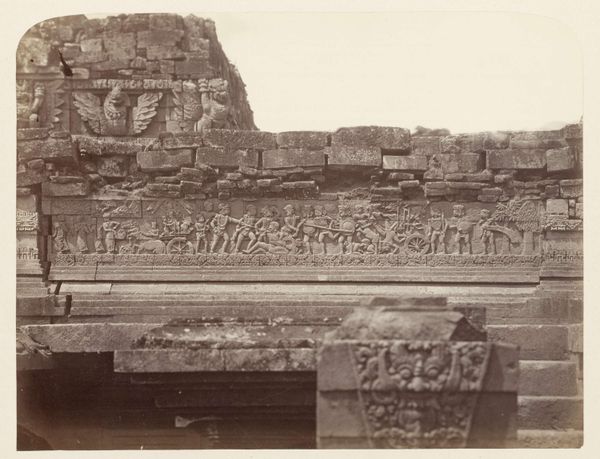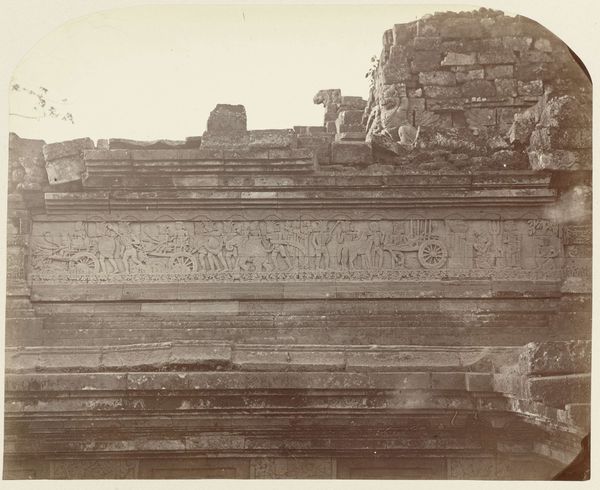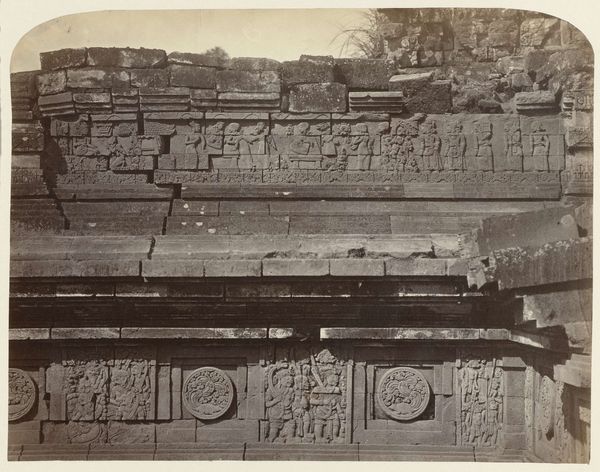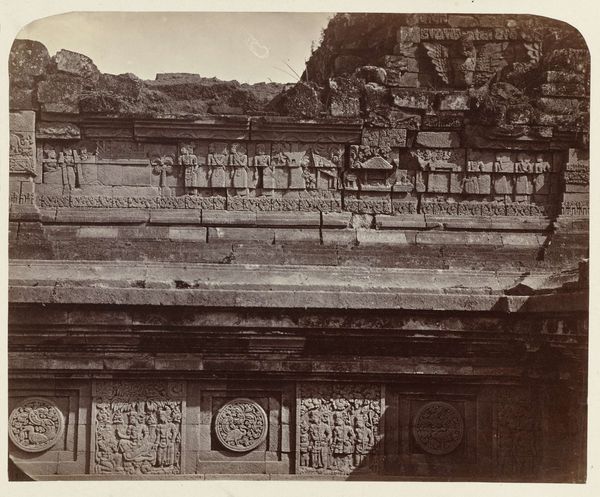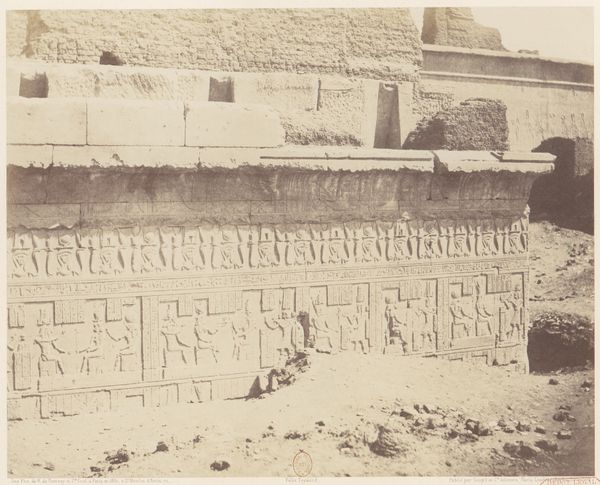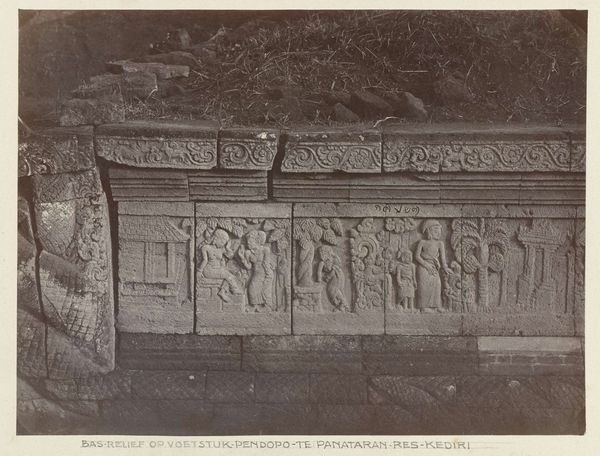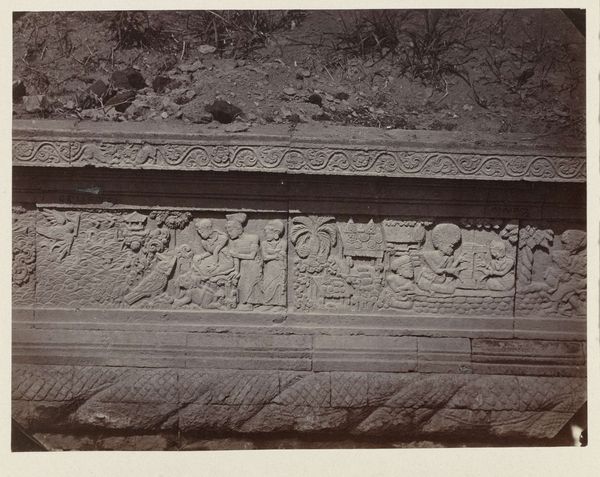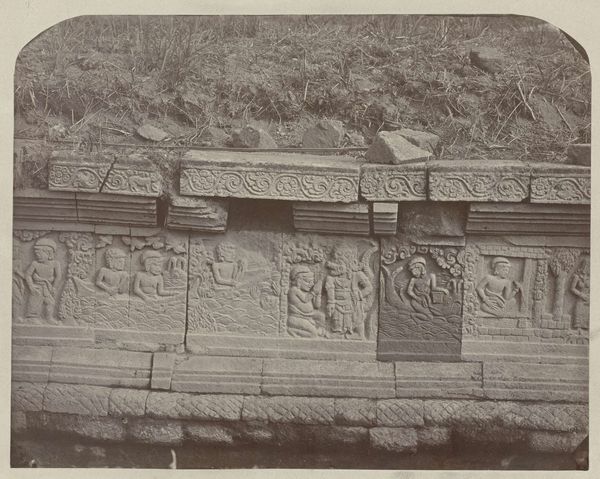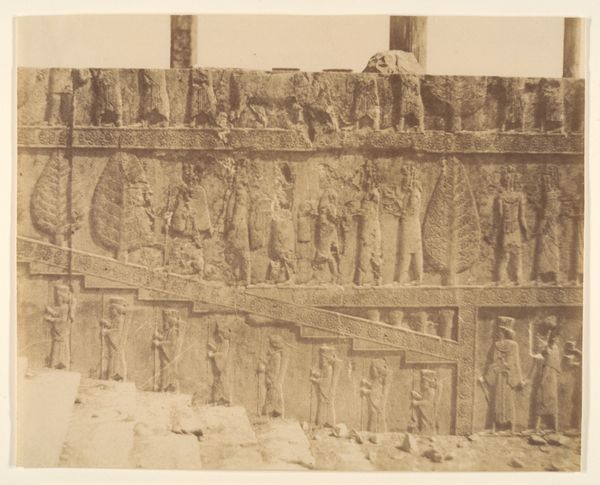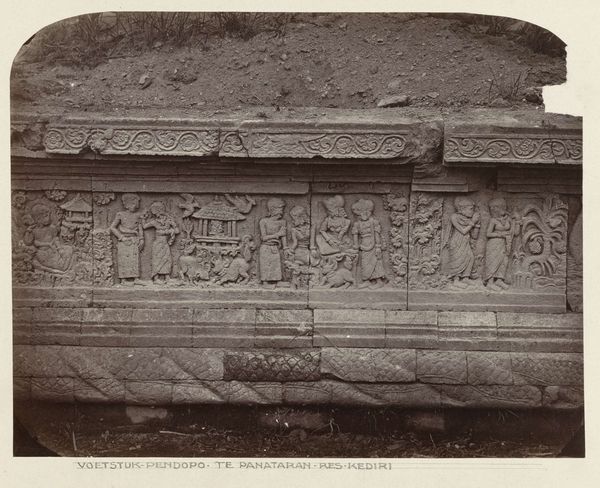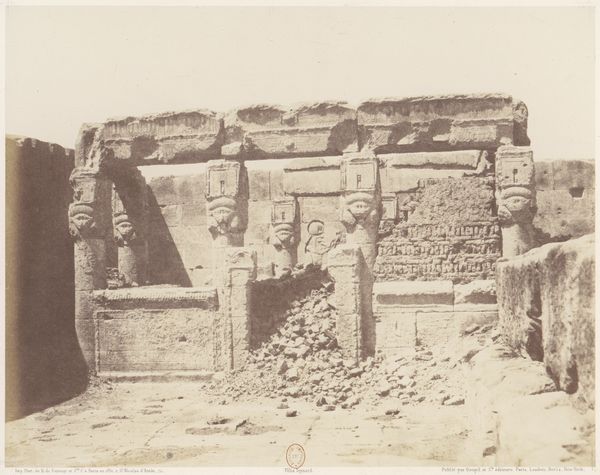
Basreliëf met een vertelling van Krishna aan de noordzijde van Candi Panataran Possibly 1867
0:00
0:00
relief, photography
#
narrative-art
#
asian-art
#
relief
#
photography
Dimensions: height 290 mm, width 340 mm
Copyright: Rijks Museum: Open Domain
Curator: At first glance, I am drawn to the scale and materiality; the texture looks so tactile even in this image, and I would love to investigate it closer! Editor: Indeed, this photograph, possibly from 1867 and credited to Isidore Kinsbergen, captures a bas-relief narrating a tale of Krishna on the north side of Candi Panataran. Notice how Kinsbergen uses photography to document and almost monumentalize this indigenous American carving. Curator: I am instantly curious about the carving's materiality, like where the materials were sourced and whether bronze tools were employed for its creation and what labor practices were used for this huge monument. Understanding these processes can reveal so much about trade routes and local craftsmanship. Editor: Absolutely, we must consider the relief within its social and historical context. How does the narrative presented – a story of Krishna – intersect with the broader political and religious landscape of that era? Whose story does this relief prioritize and whose does it marginalize? What ideological implications does it have for a society and community during the time? Curator: From a technical perspective, I am also keen to know what casting or carving techniques the creators might have employed to carve and construct these figures and to assemble all these heavy components. It suggests a significant investment in resources, skilled artisans and probably many hours of manual labor. Editor: Thinking about the choices Kinsbergen made in capturing the image, what stories are embedded in this relief? Also, to what extent does this work reinforce or challenge the conventional narrative concerning the construction of knowledge about colonialism in our own era? These questions urge a closer examination of art as an essential form of agency, as well as cultural identity and empowerment. Curator: Definitely! To fully appreciate the work, examining both material production alongside sociopolitical contexts of knowledge are helpful, especially when cultural legacies are often intertwined. Editor: This dialogue is very productive as it combines considerations about labor with issues like representation, power and agency that offer layers to our experience of this wonderful image.
Comments
No comments
Be the first to comment and join the conversation on the ultimate creative platform.
